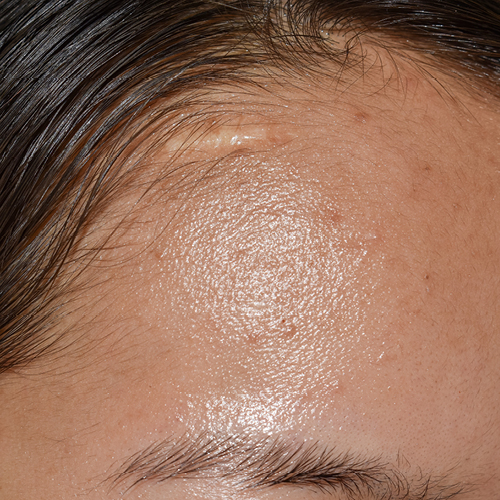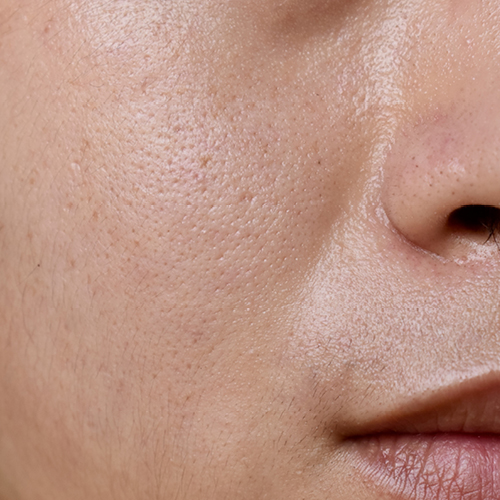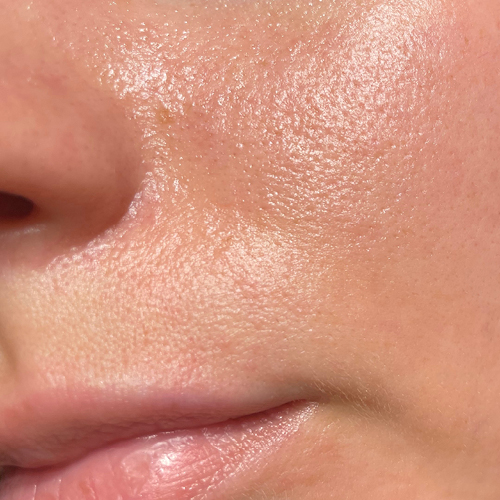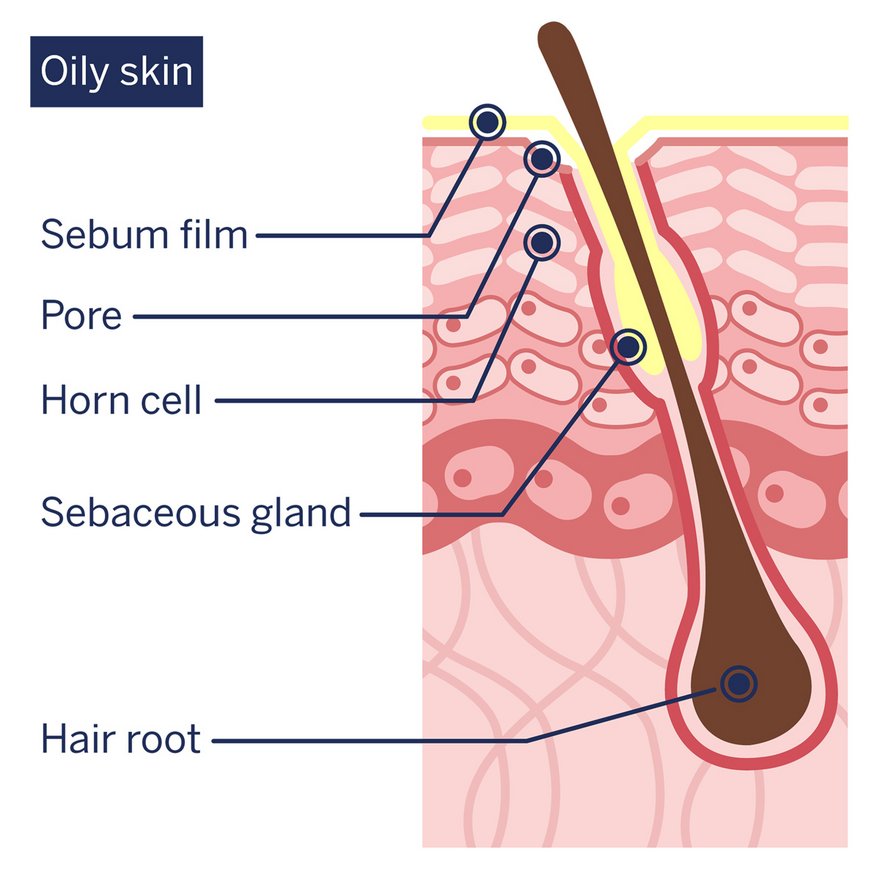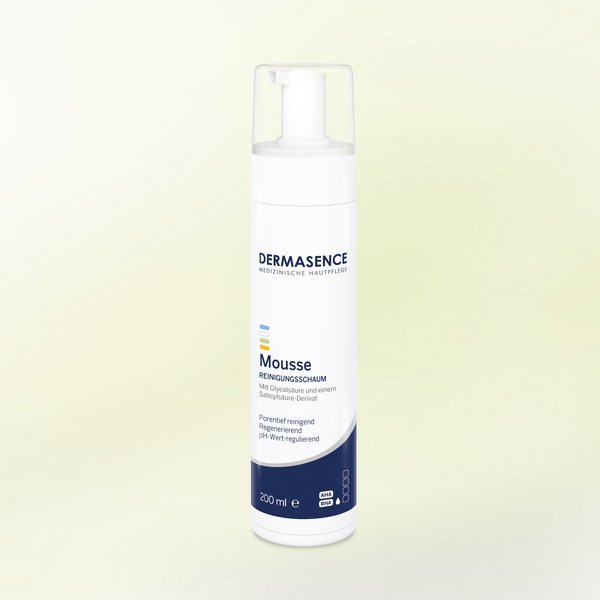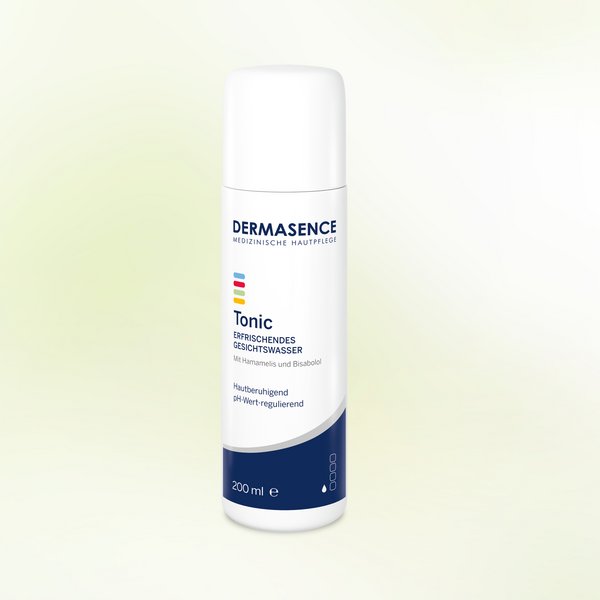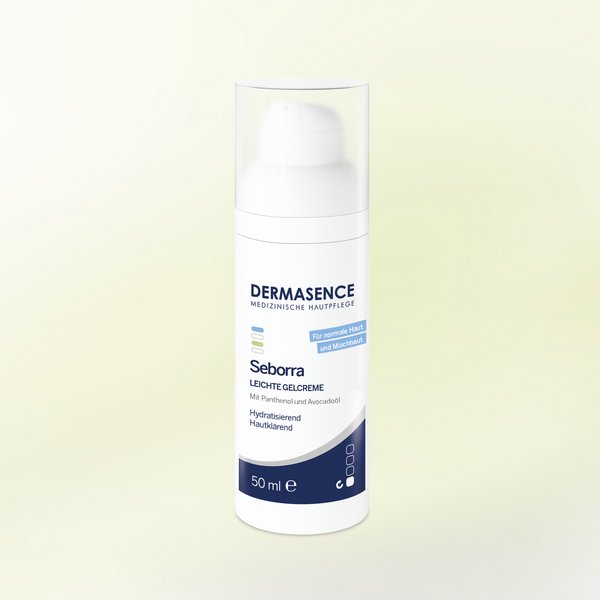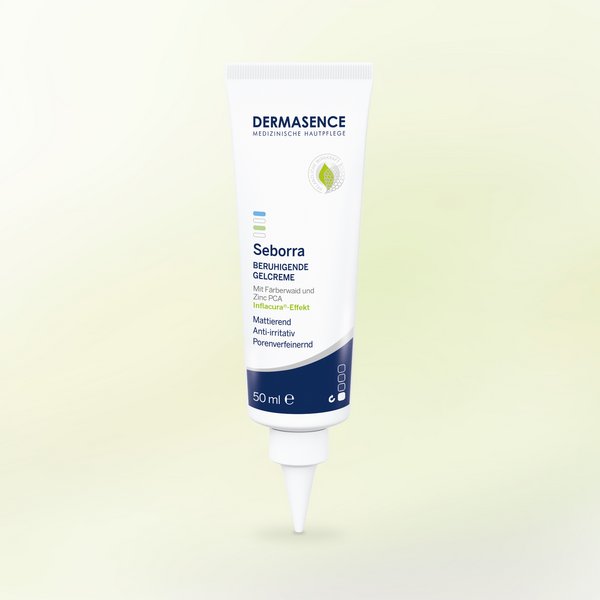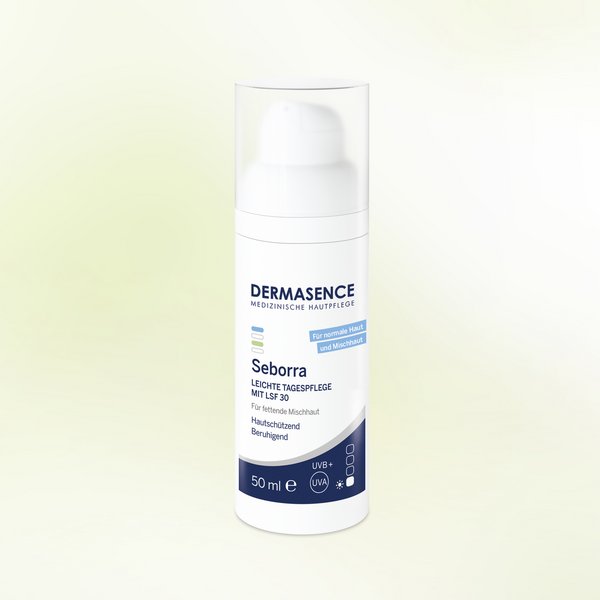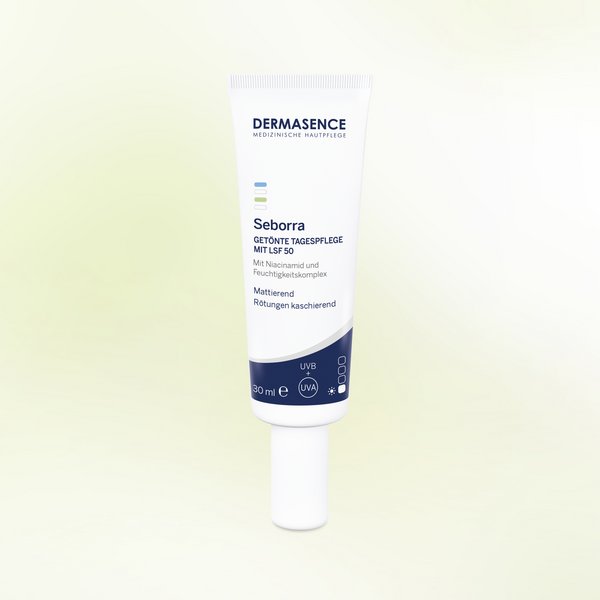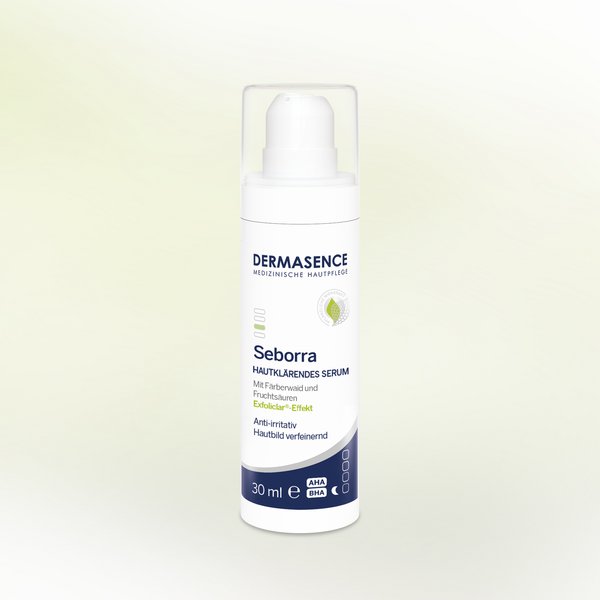
Oily skin
Medical skin care for oily skin on face
Oily, shiny skin with enlarged pores – what defines oily skin?
Oily skin results from increased sebum production. It frequently appears in the T-zone of the face, which includes the forehead, nose, and chin. However, the skin on the chest or back can also exhibit oiliness.
What are typical symptoms of greasy skin?
- Oily, shiny skin
- Enlarged pores, rough texture
- Thickened stratum corneum, causing the skin to feel thicker
- Tendency towards blemishes and acne
You would like to have a look at our product recommendations directly?
Who typically has oily skin?
Oily skin commonly affects men and adolescents of all genders.
This is due to various hormones that influence sebaceous gland activity. These include, in particular, the so-called androgens (male hormones). Sebum production often returns to normal after adolescence.
What is sebum made of?
Sebum is produced by the sebaceous glands and consists primarily of fatty acids and proteins.
Upon reaching the skin's surface, it mixes with sweat and dead horny cells (keratinocytes) This forms the hydrolipid film, which performs essential functions for the skin.
Advantages of oily skin
While many would rather not have oily skin, this skin type does offer a distinct advantage: Oily skin often shows the signs of ageing more slowly than dry skin!
Sebum forms a protective layer on the skin's surface, helping to reduce moisture loss. This delays the visible appearance of wrinkles, sagging skin, and similar signs of ageing.
Development and causes of oily skin
The skin diagram shows that each hair is associated with a sebaceous gland – this applies to all hair, including the very fine hair on the face. The sebum produced travels to the skin’s surface through the pore. This is initially a normal, healthy process.
However, in oily skin types, the sebaceous glands produce more sebum than necessary. To allow optimal sebum drainage, the pores, which also serve as sebaceous gland outlets, widen. This process results in the formation of visible pores commonly associated with oily skin. The sebum spreads across the skin’s surface and causes the typical shiny skin areas.
Excessive sebum production is medically termed seborrhoea (Latin sebum “sebum” and Ancient Greek ῥοή “flow”). Seborrhoea can also be a symptom of various (skin) diseases, physical changes, or a result of external factors:
Internal causes: include hormonal disorders (e.g. hyperthyroidism) or pregnancy
External causes include environmental influences, incorrect skin care (e.g. highly greasy creams), or medications (e.g. anabolic steroids).
Blemishes or acne?
If your oily skin is prone to pimples, blackheads, and similar concerns, we recommend our "Blemished Skin & Acne" page.
DERMASENCE Seborra series
The DERMASENCE Seborra series provides appropriate care for oily, combination, and acne-prone skin. It features a holistic care concept with products that help mattify the skin and refine its appearance. Anti-inflammatory and keratolytic active ingredients reduce impurities such as pimples (pustules and papules) and blackheads (comedones).
Discover Seborra products for oily, large-pored skin without inflammatory blemishes here.
Combination Skin – where oily and dry skin areas are located in close proximity.
Combination skin is classified as a distinct skin type. This skin type features both oily and dry areas on the face. Typically, the T-zone (green) is oily, while the cheek area (red) is dry. The degree of dryness or oiliness in each zone varies from person to person and is also influenced by factors such as season and age. Dry skin areas also tend to develop wrinkles and show signs of ageing earlier.
Due to its varying needs, combination skin presents specific challenges for skin care: Oily areas of the skin require moisture and sebum-regulating active ingredients. Dry areas of the skin, on the other hand, need lipids (fats and oils) in addition to moisture.
Medical skin care for combination skin
At DERMASENCE, you will find skin care products that provide optimal care for combination skin. As basic facial care, we recommend a light moisturiser, such as DERMASENCE Seborra Light gel cream or DERMASENCE Seborra
Light day cream with SPF 30.
In addition, products from other DERMASENCE care ranges are particularly suitable for dry skin areas.
- The DERMASENCE Hyalusome series combines intensive moisturisers with effective anti-ageing ingredients. Ideal for skin from the age of 25 onwards.
- The DERMASENCE Chrono retare series can be used on particularly dry skin areas. Our recommendation for skin from the age of 45 onwards.
Sources
- Kirsten N, Mohr N, Alhumam A, Augustin M. Prevalence and associated diseases of seborrheic skin in adults. Clin Epidemiol. Published online 2021:845-851.
- Köhn FM, Ring J, Worret WI. Kosmetische Dermatologie. Fallstricke Fehlerquellen Dermatol. Published online 2004:265-274.
- Bährle-Rapp M, Bährle-Rapp M. Mischhaut. Springer Lex Kosmet Körperpflege. Published online 2020:357-357.
- Ellsässer SK. Kosmetik: Ein Lehrbuch für die PTA-Ausbildung und die Beratung in der Apothekenpraxis. Published online 2008.
- Tilles G. Acne Pathogenesis: History of Concepts. Dermatology. 2014;229(1):1-46. doi:10.1159/000364860
- Dall’oglio F, Tedeschi A, Fabbrocini G, Veraldi S, Picardo M, Micali G. Cosmetics for acne: indications and recommendations for an evidence-based approach. G Ital Dermatol E Venereol Organo Uff Soc Ital Dermatol E Sifilogr. 2015;150(1):1-11.
- Nast A, Bayerl C, Borelli C, et al. S2k - Leitlinie zur Therapie Akne.

